Birds are one of the most popular animals to see while on Safari. There are many reasons for this, but one of the main ones is that they are so easy to spot! Whether you’re looking for big birds or small ones, brightly colored birds or more camouflaged species, there is sure to be a bird that catches your eye while on Safari in South Africa.
One of the best things about bird watching on Safari is that you don’t have to be an expert to enjoy it. Even if you’re not sure what you’re looking at, the experience of seeing these beautiful creatures in their natural habitat is sure to be memorable.
15 birds in South Africa that you may spot while on Safari:
Lilac-breasted roller
The lilac-breasted roller is a colorful bird that is native to sub-Saharan Africa. It gets its name from the Lilac hue on its breast, contrasted by its blue and green plumage. This bird is relatively small, measuring around 28cm. The lilac-breasted roller is a curious bird known to perch high up on trees to look for prey.
These birds are also known to be acrobatic flyers, making them fun birds to watch while on Safari. This bird is called a roller because of its habit of rolling over in the air while in flight. This behavior is considered a courtship display, but it is sometimes done simply for fun! The lilac-breasted roller is a carnivorous bird whose diet consists mainly of insects, lizards, scorpions, and small mammals. You’re most likely to spot this pretty bird on Safari in the Kruger National Park.
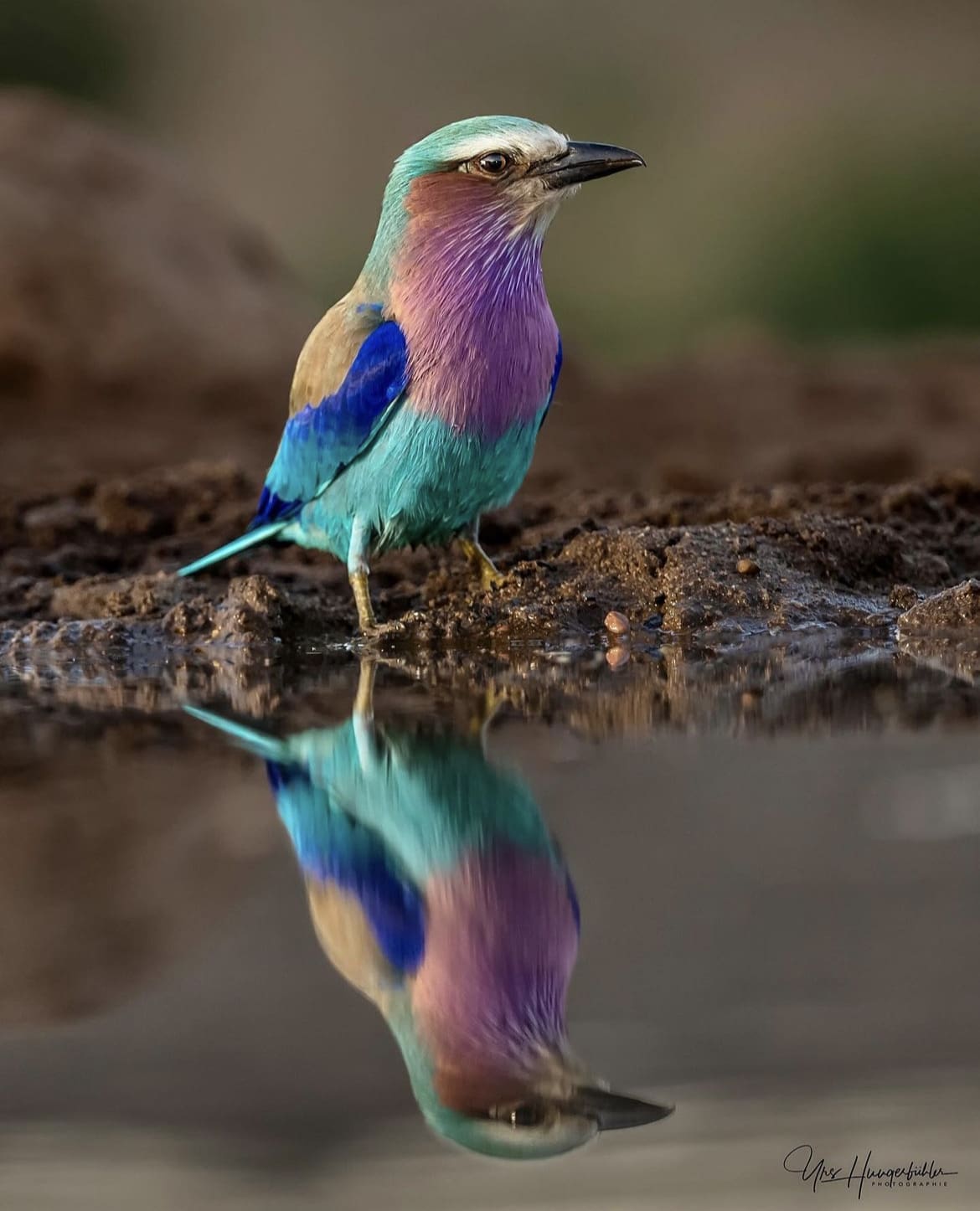
African Fish Eagle
The African fish eagle is a large bird of prey found near freshwater lakes and rivers throughout sub-Saharan Africa. These birds are easily recognizable by their white head, tail, and dark brown body. The African fish eagle has a wingspan of 2.1-2.4m.
The female African fish eagle is larger than the male, with a wingspan reaching up to 2.6m! These birds are carnivores whose diet consists mainly of fish but will also eat reptiles, small mammals, and carrion.
The African fish eagle has a distinct call that sounds like a loud, high-pitched “shriek.” You may hear this call before you see the bird, as they are known to perch in trees near their hunting grounds. You may find an African Fish Eagle on Safari near Lake Nakuru in Kenya or along the Zambezi River in Zambia.

Kingfisher
Kingfishers are a group of small to medium-sized birds that are found throughout the world. There are over 90 species of kingfisher, and they come in various colors and sizes.
These birds typically have brightly colored plumage, with blues and greens being the most common colors. Kingfishers are known for their ability to dive into the water to catch fish. Some kingfisher species can dive up to 10m to catch their prey! Not many birds have this skill, making them interesting to watch while on Safari.
The Kingfisher typically eat insects, small reptiles, and amphibians but also small mammals and birds. You may spot a kingfisher while on Safari near freshwater lakes or rivers. .
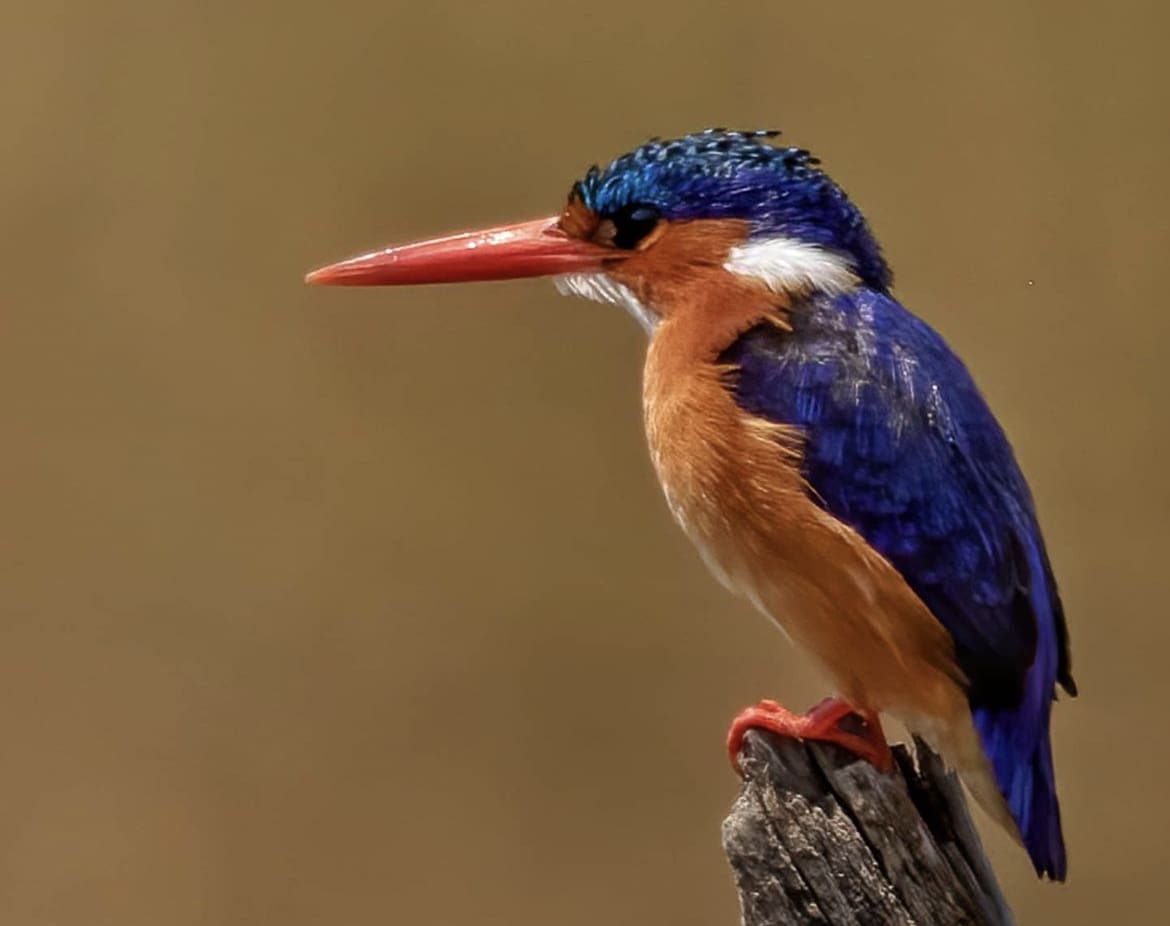
Blue Crane
The blue crane (Anthropoides paradisea) is the national bird of South Africa. It is a tall, blue-grey bird with a long neck, legs, and bill. The body plumage is primarily grey-blue, with areas of white on the wings and belly. The head is grey-blue with a white face, and the bill is black. The legs are black.
Found in open grassland and wetlands in southern Africa, the blue crane is a migratory bird that breeds in South Africa, Lesotho, Botswana, Namibia, Zimbabwe, and Mozambique. The blue crane is a protected species in South Africa.
Blue crane’s are omnivorous and eat a variety of food items, including insects, rodents, reptiles, and plant material. It has a lifespan of 20 to 30 years in the wild. If you’re lucky enough to spot a blue crane on Safari, it will most likely be in South Africa’s Kruger National Park.


Hornbill
Hornbills are a group of large birds found in sub-Saharan Africa, Asia, and parts of Australasia. These birds get their name from the Horn-like appendage on their beak. There are over 60 species of hornbill, and they come in various colors and sizes.
The African grey hornbill is the most common species of hornbill found in Africa. These birds are grey with white underparts and a black bill. The African grey hornbill is a herbivore whose diet consists of fruits, seeds, and insects.
Hornbills are interesting birds because they play an essential role in the ecosystem. These birds eat fruits and disperse the seeds in their droppings. This helps to spread plants and trees throughout the forest. You can find them in national parks like Virunga and Kruger.
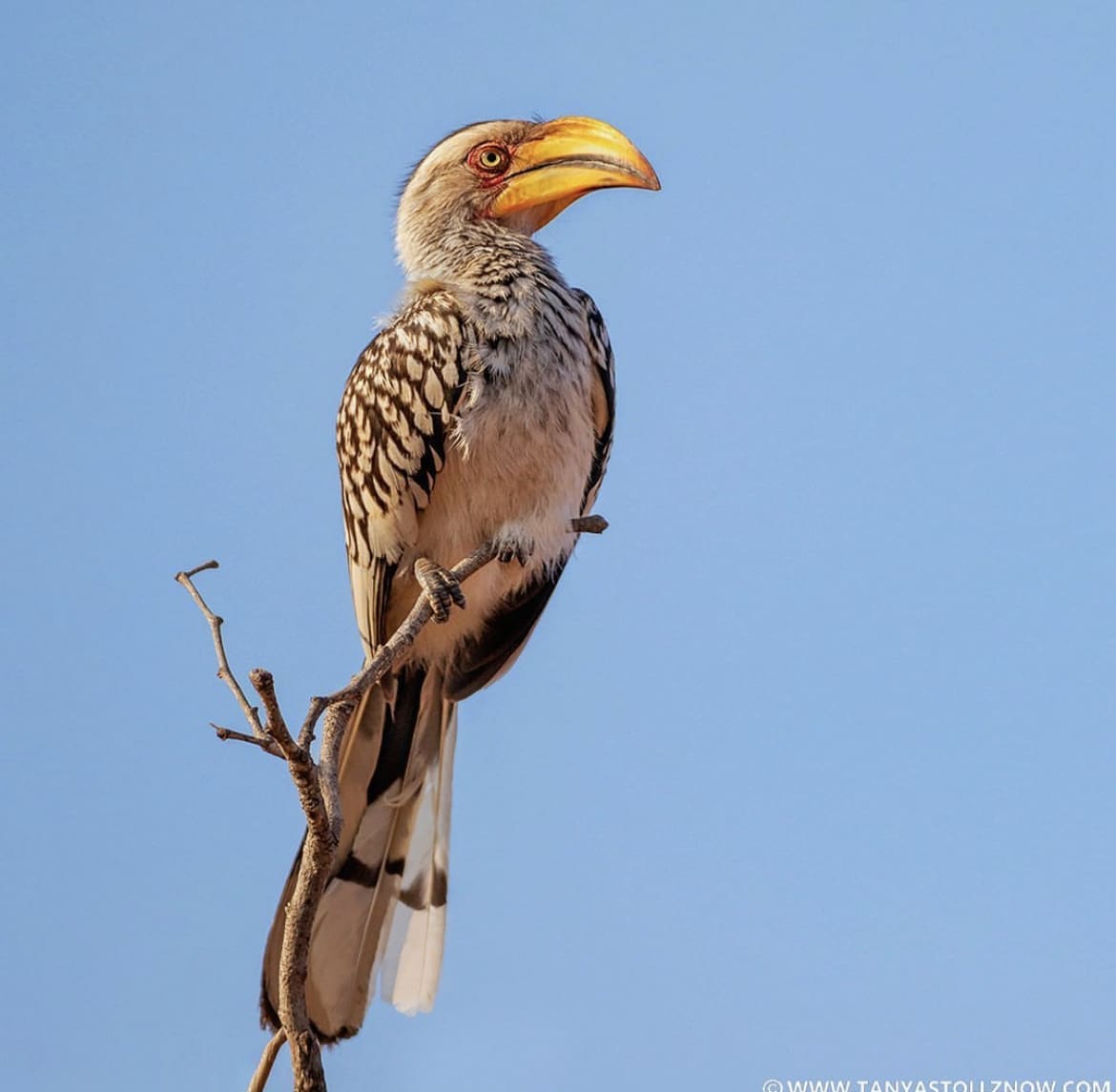
Southern Ground Hornbill
The southern ground hornbill is a large bird found in sub-Saharan Africa. These large birds are easily recognizable, with their long necks, black plumage, and bright red facial skin. But you’ll have to be quick – they’re rare and getting rarer.
They have a wingspan of 1.5-1.8m and are found in open woodlands and savannas. The southern ground hornbill is a carnivore whose diet consists of reptiles, small mammals, and birds. You may spot a southern ground hornbill while on Safari in the Kruger National Park in South Africa.
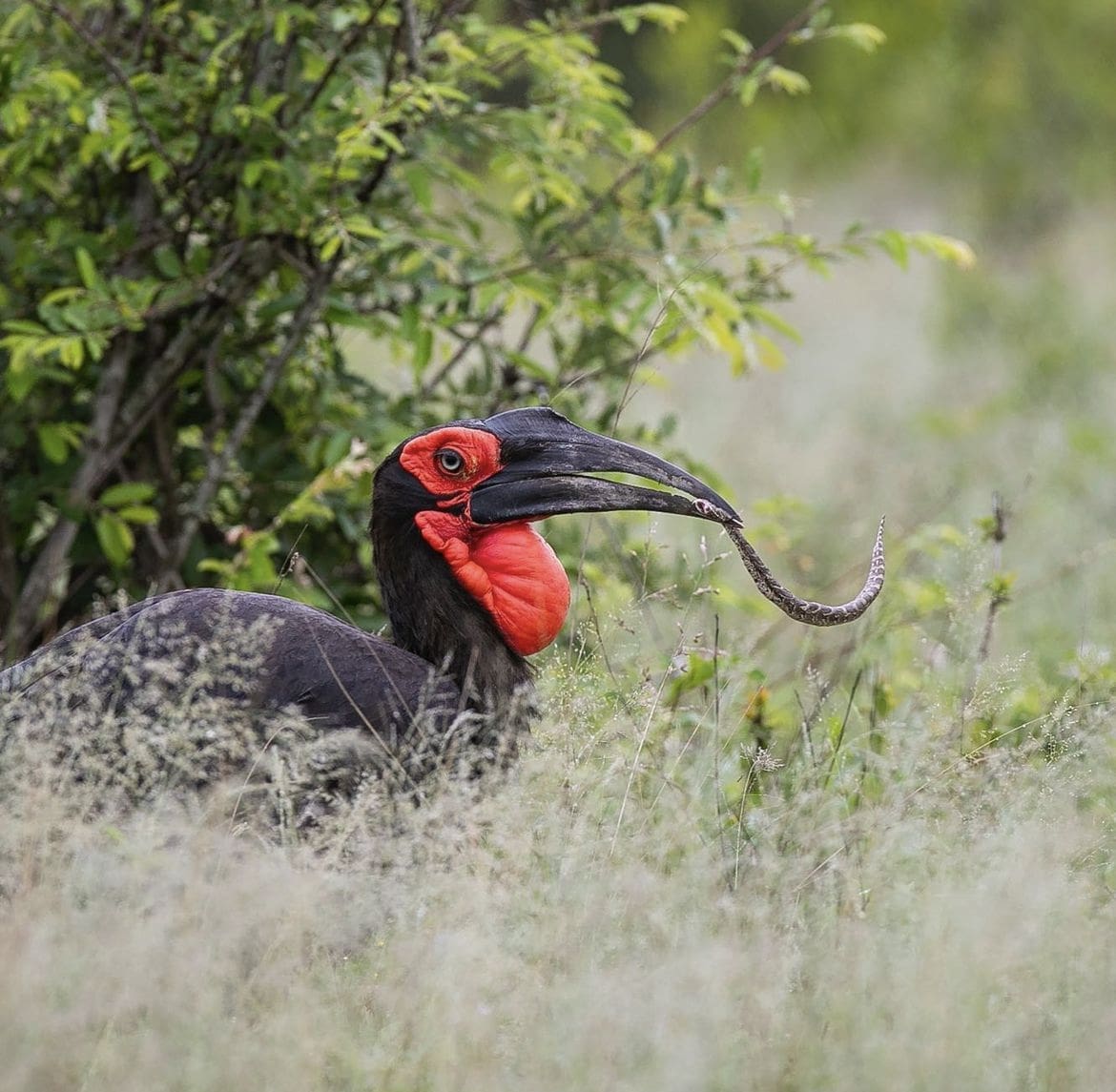
Cape Vulture
The Cape Vulture (Gyps coprotheres), is a large Old World vulture in the family Accipitridae. It breeds on crags in southern Africa, laying two eggs. This 80–105 cm long bird is almost wholly black, with white wing tips and undersides to the flight feathers. The head has a bare orange or yellow face, and the neck is often flecked with white down. The large bill is blackish, and the legs are pink-orange.
Juveniles have brown plumage, which lightens as they become adults. Cape vultures feed almost exclusively on carrion which they find by soaring over open country. They are gregarious, often forming large flocks. They roost and breed on cliffs, generally laying two eggs in nests of sticks and urine-soaked rags. Kruger National Park is home to a large population of Cape vultures, so this is an excellent place to spot one on a safari.

Marabou Stork
The Marabou Stork is a large wading bird from the stork family Ciconiidae. Found in sub-Saharan Africa, these birds frequent swampy habitats near lakes and rivers. The Marabou Stork is a scavenger and often feeds on carrion. It is a soaring bird that uses thermals to gain height, from which it can glide effortlessly for long distances. It nests in trees, often along rivers.
Marabou Storks are large, typically 150 cm (5 ft) tall with a wingspan of up to 3 m (9.8 ft). Their body is massive, and their neck is long and thick. The stork’s bill is long and down-curved; the upper mandible is black, while the lower is pink. The legs are black and long, with three toes webbed at the base. The wings are broad and span up to 2.6 m (8.5 ft). You may spot a marabou stork while on Safari in the Kruger National Park or the Serengeti National Park.
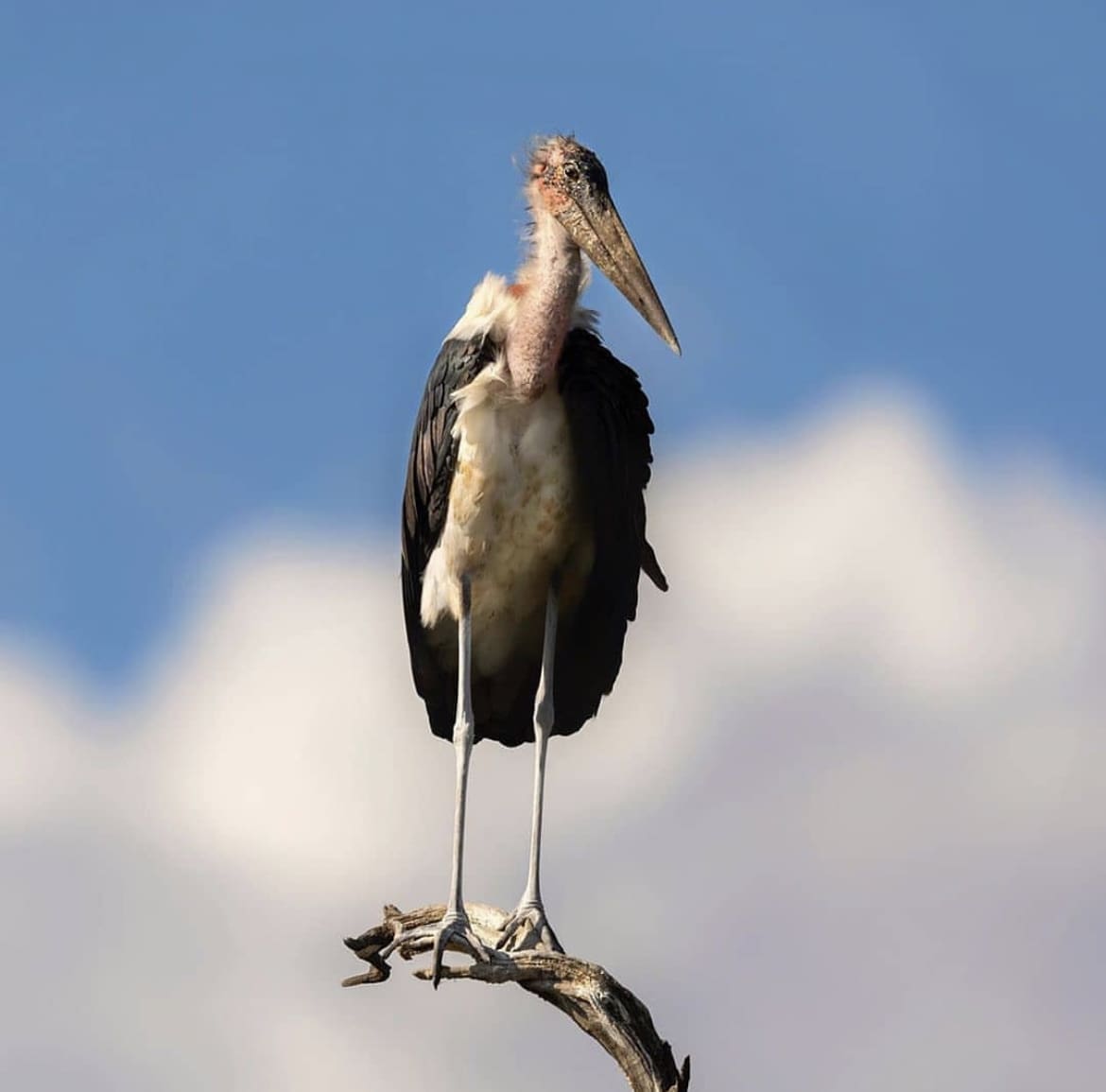
Egyptian Goose
The Egyptian goose is a large, semi-aquatic bird found in sub-Saharan Africa. It boasts a long neck, plump body, and relatively long legs. The bill is yellow with a black tip, and the eyes are dark brown. The adult plumage is mainly brown with black and white markings on the wings and back. The underparts are white, and there is a black band around the neck. Their legs and feet are orange-red.
These birds are found in almost all bodies of water in Southern Africa, and are likely to be spotted in every national park. The Egyptian goose is a herbivore whose diet consists of seeds, fruits, and insects.

Ostrich
The ostrich is the largest bird in the world and is found only in Africa. These birds are easily recognizable by their black plumage and white underparts. The ostrich has a wingspan of 2.1-2.6m and can stand at more than 6 foot tall.
These birds are found in open woodlands and savannas. The ostrich is a herbivore whose diet consists of seeds, fruits, and insects. The ostrich plays a vital role in the ecosystem by eating fruits and dispersing the seeds in its droppings.
You may spot an ostrich on Safari in the Masai Mara National Reserve or Serengeti National Park.

Secretary bird
The secretary bird is a large, long-legged bird of prey. Adults are primarily grey with black flight feathers, and their head is small and bald, with a long, curved beak. The neck is long and thick, and the legs are powerful. The secretary bird is a member of the order Falconiformes, which includes all the diurnal birds of prey, such as eagles, hawks, kites, and falcons. They are found in sub-Saharan Africa.
It prefers open grassland or savannah habitat but can also be found in dry woodlands and scrubland. The secretary bird is a predator whose main diet is snakes, which it kills by stamping on them with its powerful legs. It will also eat lizards, rodents, birds, and insects.
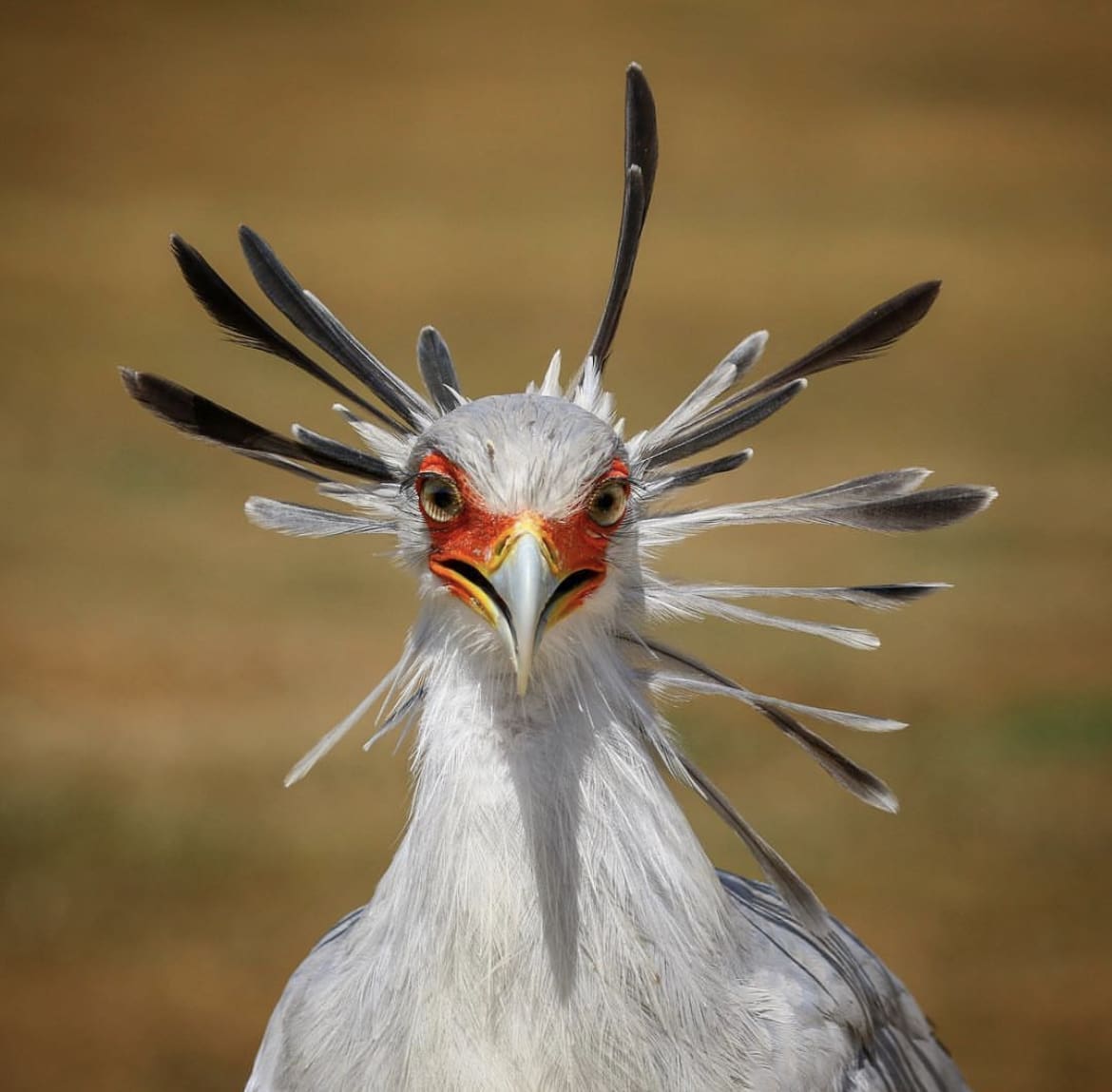
Martial Eagle
The martial eagle (Polemaetus bellicosus) is a giant African eagle. It is the largest and most powerful raptor in Africa and has been known to take down large prey items such as antelope, deer, and even ostrich. A formidable predator, the martial eagle, has few natural enemies except for other large birds of prey.
The martial eagle is a large bird of prey with a body length of up to 80 cm (31 in). It has a wingspan of up to 2.1 m (6.9 ft). They are found in woodlands, savannas, and grasslands. The martial eagle preys on many animals, including mammals, reptiles, birds, and fish. Large prey items such as antelope, deer, and ostrich are taken, but the eagle will also prey on smaller animals such as rodents, lizards, and snakes.
They nest in trees, often near water. The nest is a large platform of sticks, leaves, and grass lined with green leaves. The martial eagle can be seen on Safari in the Southern on East Africa.
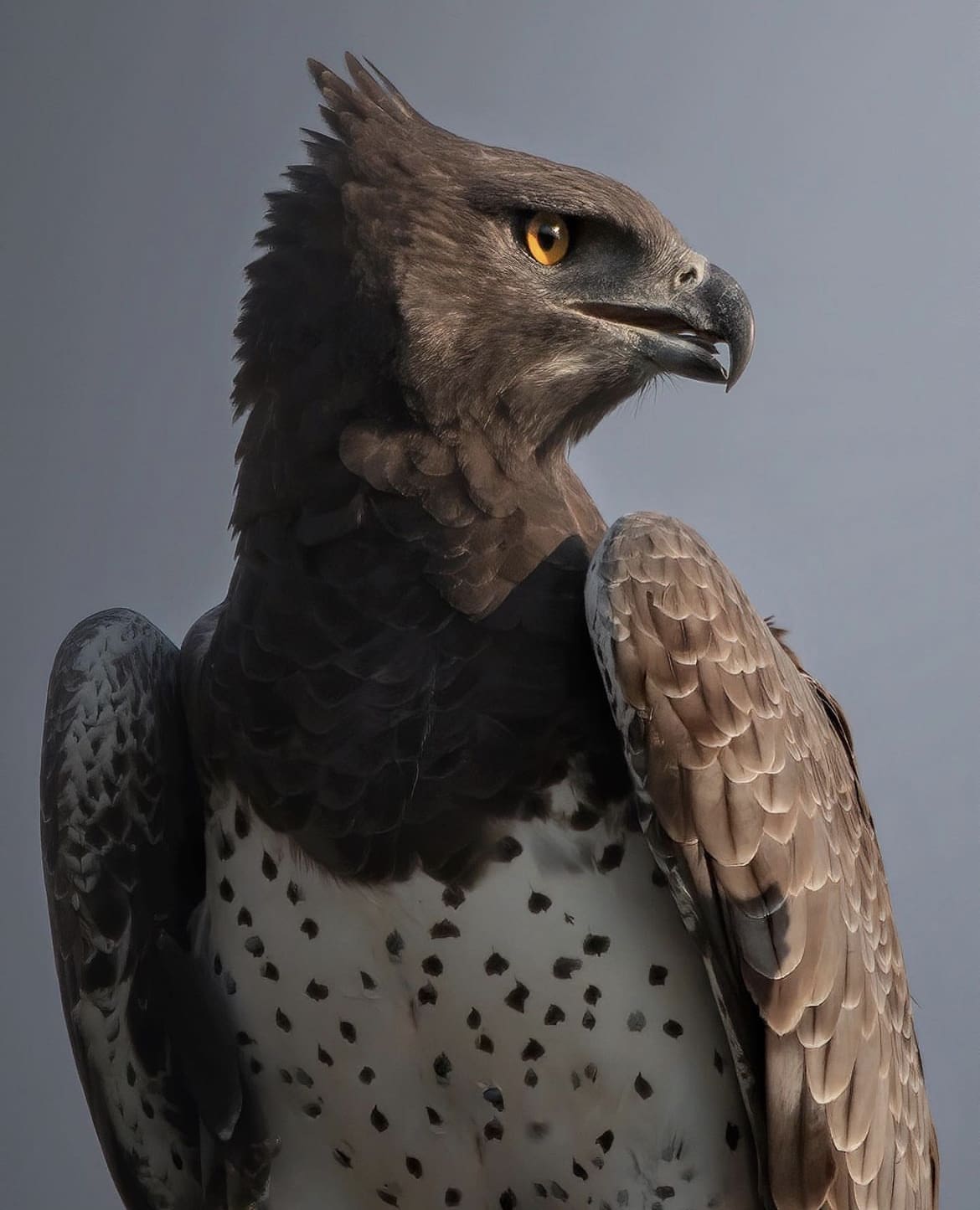
Guinea Fowl
Guinea Fowl is a domesticated bird that is closely related to turkeys. The guinea fowl is native to Africa and was brought to Europe by the Romans. The guinea fowl is a famous game bird hunted for its meat. It a plump bird with dark-colored feathers.
The guinea fowl is about the size of a chicken, with a long neck and short, stout legs. It is a omnivorous species whose diet consists of seeds, fruits, as well as insects, worms, and even small mammals. The guinea fowl is known for its loud call, which sounds like “keen-wah.” The guinea fowl is a famous bird in zoos and bird parks, as it is very tame and can be easily trained.
Guinea fowl are easy to spot in most wilderness areas in sub-Saharan Africa.
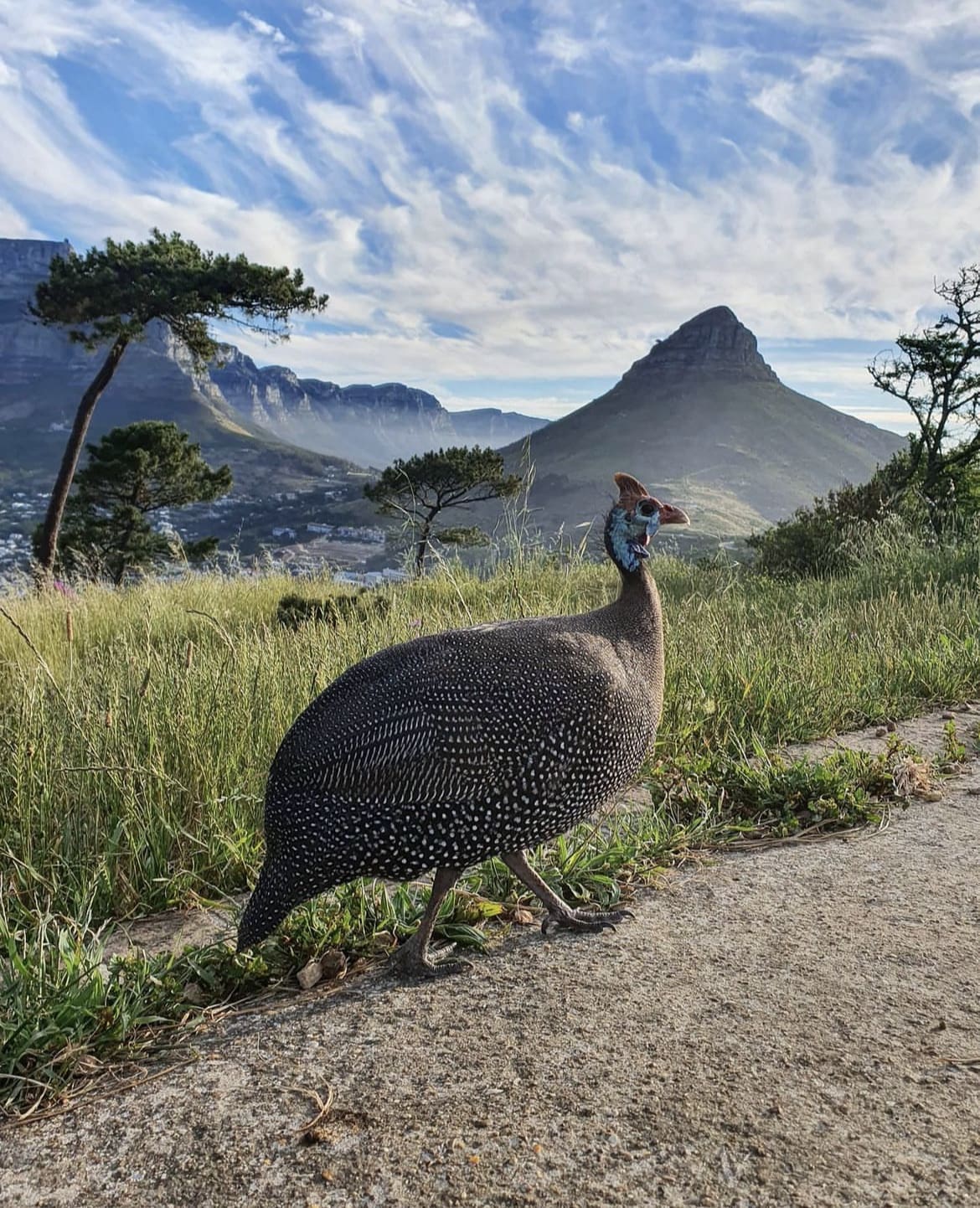
African Hoopoe
The African hoopoe is a colorful bird that is found across sub-Saharan Africa. It is a member of the family Upupidae, which also includes the European hoopoe. A medium-sized bird, the African hoopoe a body length of between 25 and 30 cm (10 and 12 in). It has a black and white striped head with a long, curved bill. The upper parts of the bird are black, with a white band running across the wings. It’s underside is white, with black bars on either flank.
The African hoopoe is an insectivorous bird, feeding on ants, termites, and other small invertebrates. It nests in tree holes, using its long bill to excavate the nesting site. You can find them in national parks like Kruger National Park in South Africa.

Red-billed oxpecker
The Red-billed oxpecker (Buphagus erythrorhynchus) is a member of the family Buphagidae, found in Africa – south of the Sahara. It is a plump bird with a black back, wings, and tail. The underparts are white, while it’s face and throatare black. This bird’s most notable feature is it’s red beak.
Both sexes are similar in appearance. Juveniles are browner overall, with a paler complexion and bill. This bird is found in open woodlands, often near water. It is a gregarious species, forming flocks of up to 100 birds. It feeds on insects, especially those that live on the skin of ungulates (hoofed mammals).
It also eats ticks and follows large mammals to eat the insects they disturb in the grasslands. While on Safari in any of Africa’s national parks, you may observe a red-billed oxpecker.

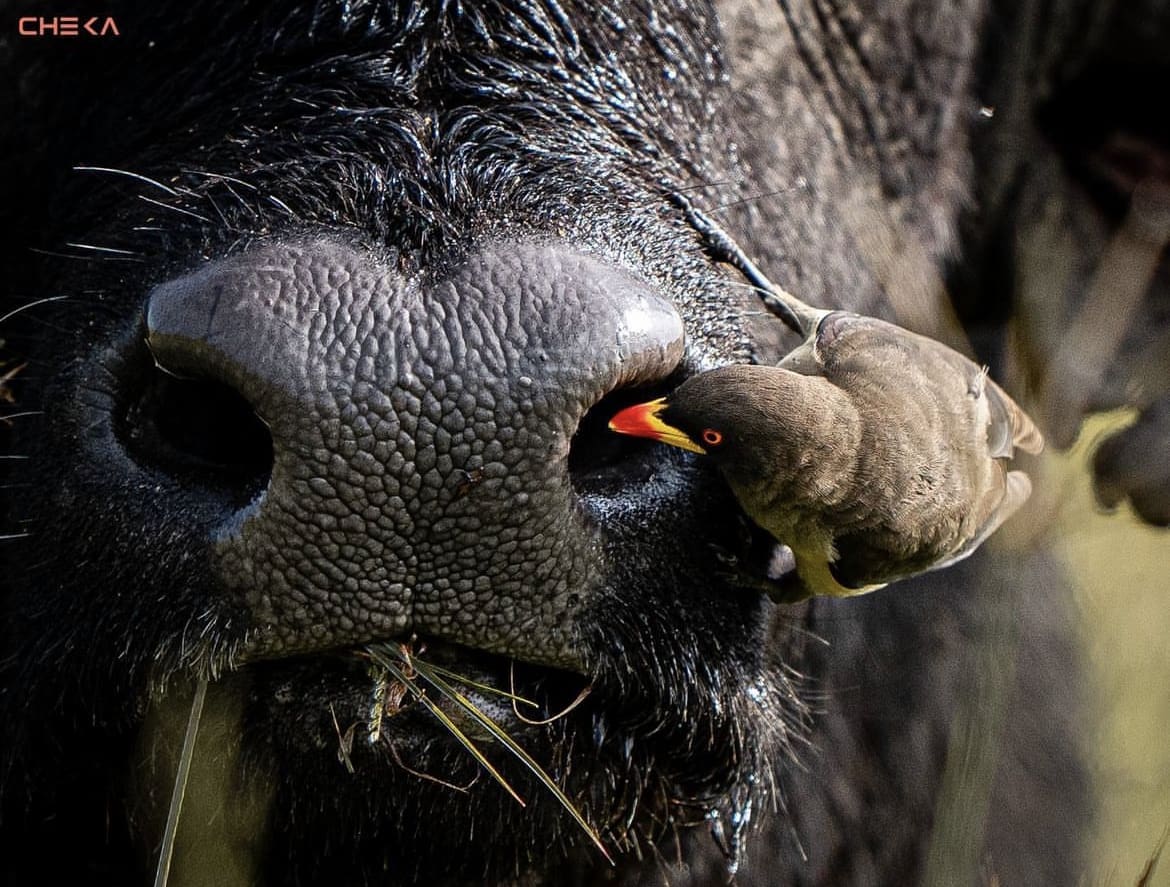
Conclusion
The 15 bird species we have highlighted are all found in Africa and are commonly spotted while on Safari. Some common ones include the ostrich, the secretary bird, the martial eagle, and the guinea fowl. Others, such as the African hoopoe, are not as well known. These birds range in size from the tiny red-billed oxpecker to the massive ostrich. Each of these birds is unique and interesting, so watch them on your next African Safari!
